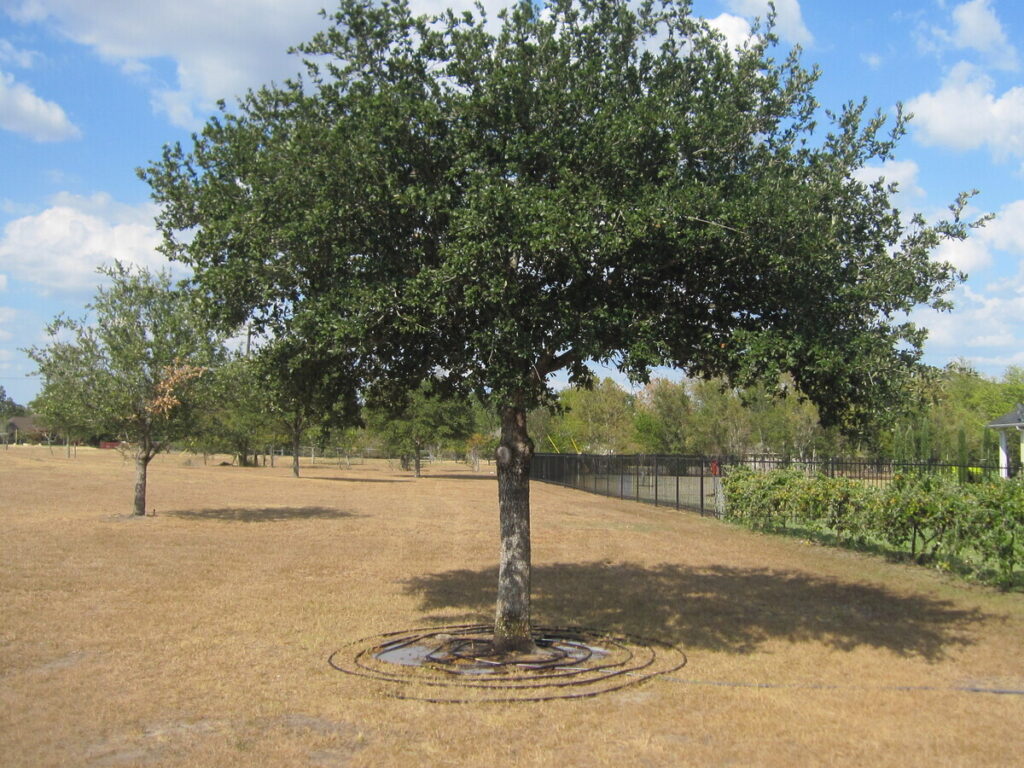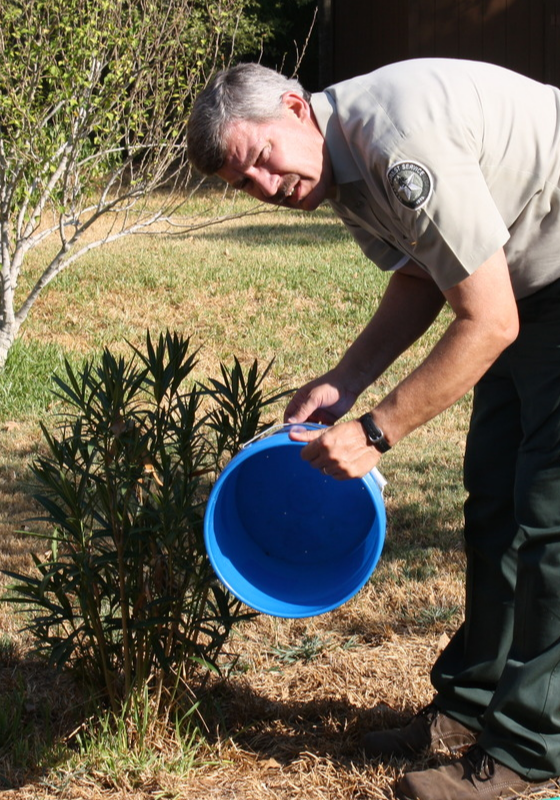During a drought
- Don’t apply high-salt, quick-release fertilizers
- Don’t dig under the canopy of a tree
- Don’t prune live branches off young trees
During a drought, the lack of water causes trees to photosynthesize less, or make less food, which leads to a lack of nutrients needed to survive.
Plants generate their own food through photosynthesis and one of the key components of photosynthesis is water. Water is necessary for the chemical reactions that create sugars, to help move the needed materials around in the tree, and to utilize those materials.
When this happens, trees will start to show physical symptoms of the lack of nutrients. While these symptoms can vary from species to species, most trees will begin to show signs of water stress through their leaves.
Things to look for are leaves dropping or wilting, small or malformed leaves, yellowing of the leaves, and browning tips of the leaves. Some species, like junipers, may totally brown out, losing all of their leaves.
Just because leaves begin to fall, does not mean the tree is dead though. For small trees, you can simply use your thumb nail and scrape some of the smaller twigs – if there is still green underneath, then the tree is not dead. Within a few weeks, it may leaf back out. If you are concerned your tree is dead, contact a certified arborist for a professional opinion.





